How To Grow Herbs Indoors – Tips, Tricks, And Guide
-
Pete Ortiz
- Last updated:

Growing fresh herbs indoors is a great way to have regular access to herbs for cooking and other uses. It also smells great and adds greenery. The herbs themselves can be easy to care for, although the exact care requirements depend on the type of herbs chosen, and you don’t need much space at all to be able to grow a few culinary essentials. Anybody with a sunny windowsill is able to grow herbs including basil, chives, mint, oregano, rosemary, and thyme.
Below are 10 tips to help you grow herbs indoors, whether you are new to indoor growing or already have some experience.
The 10 Tips and Tricks to Grow Herbs Indoors
1. Choose Your Herbs
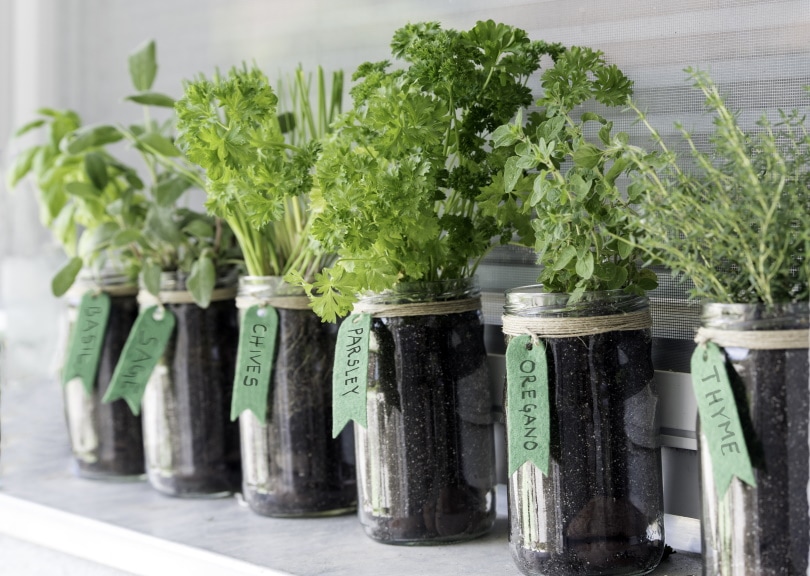
There are dozens and dozens of different herbs to choose from, but your best bet will be those that require minimal fuss and attention: herbs like basil and mint, for example. Not only are these relatively simple to grow but they also have a lot of different uses in the kitchen. It is possible to grow from cuttings or directly from seeds, and seeds are readily available from gardening centers as well as online.
2. Ensure Good Drainage
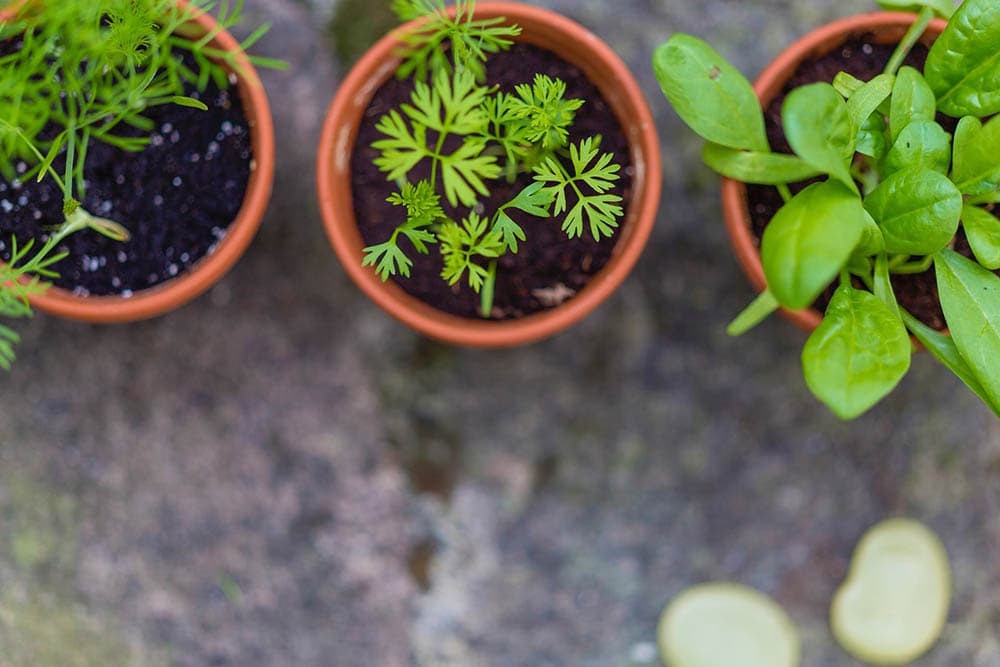
To grow indoors, you will need decent planters. Don’t get too carried away with size, choose something big enough that you won’t have to repot after a few weeks, but small enough that it will fit on the windowsill comfortably and won’t take up all the room. When choosing planters, you want something quite attractive, because it will be living on your kitchen windowsill, but you also want to ensure good drainage. Choose planters with drainage holes and place them on a saucer or tray. Alternatively, line the bottom of planters with pebbles to prevent the soil from getting saturated and potentially becoming moldy.
3. Use Separate Pots For Different Herbs
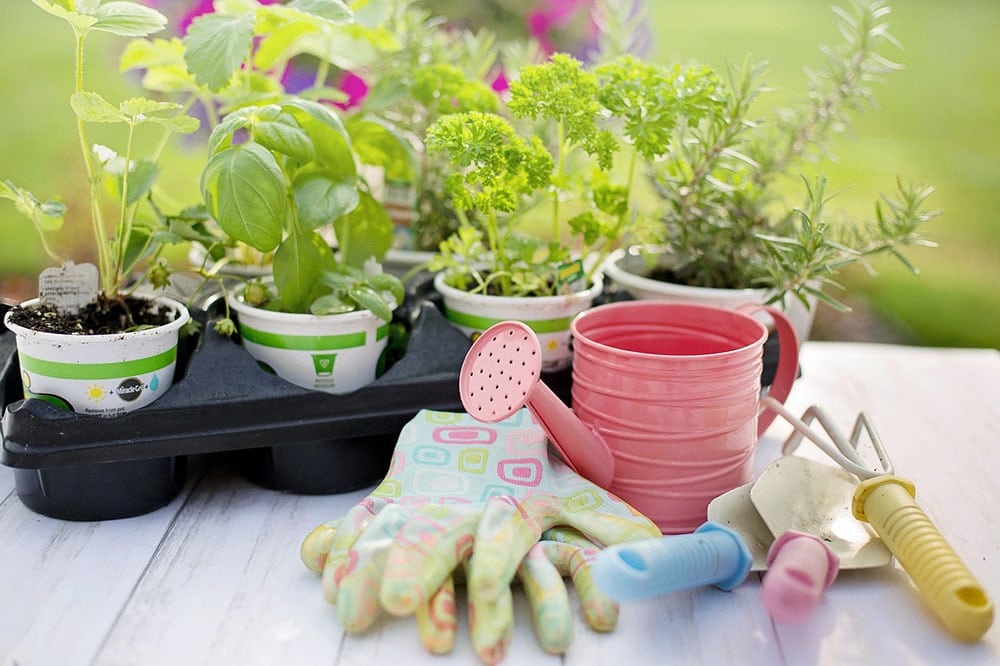
There are several reasons to give each type of herb their pot. It will make it easier to identify what you are picking, and it enables you to provide the appropriate care, such as water level, for each herb type. This enables you to move herbs around for more or less light and to ensure good air circulation between the plants: all of which are important.
4. Use a Good Soil
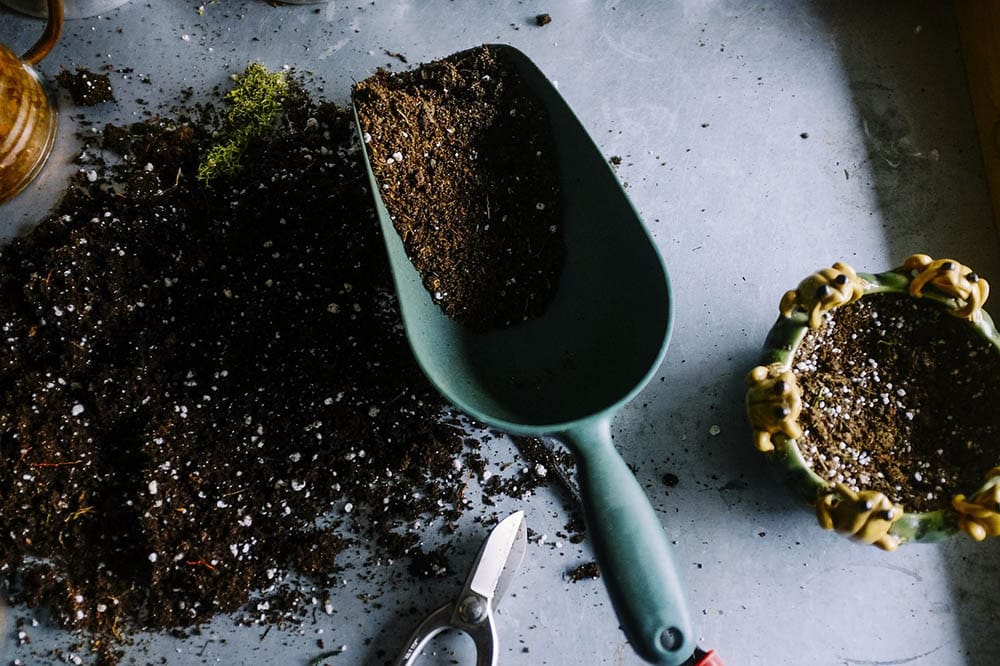
Unfortunately, using soil from your own garden is unlikely to yield the best results because it is compact and does not offer the best growing conditions for herbs. Indoor herbs do need good drainage. As well as choosing a planter that offers drainage, you should also use a soil or potting mix that further enhances drainage. The mix should be light, and if you feel that yours is too heavy or thick, try adding vermiculite. Mixes tend to be lighter than potting soils because they contain an aerator.
5. Use A Natural, Nitrogen-Rich Fertilizer
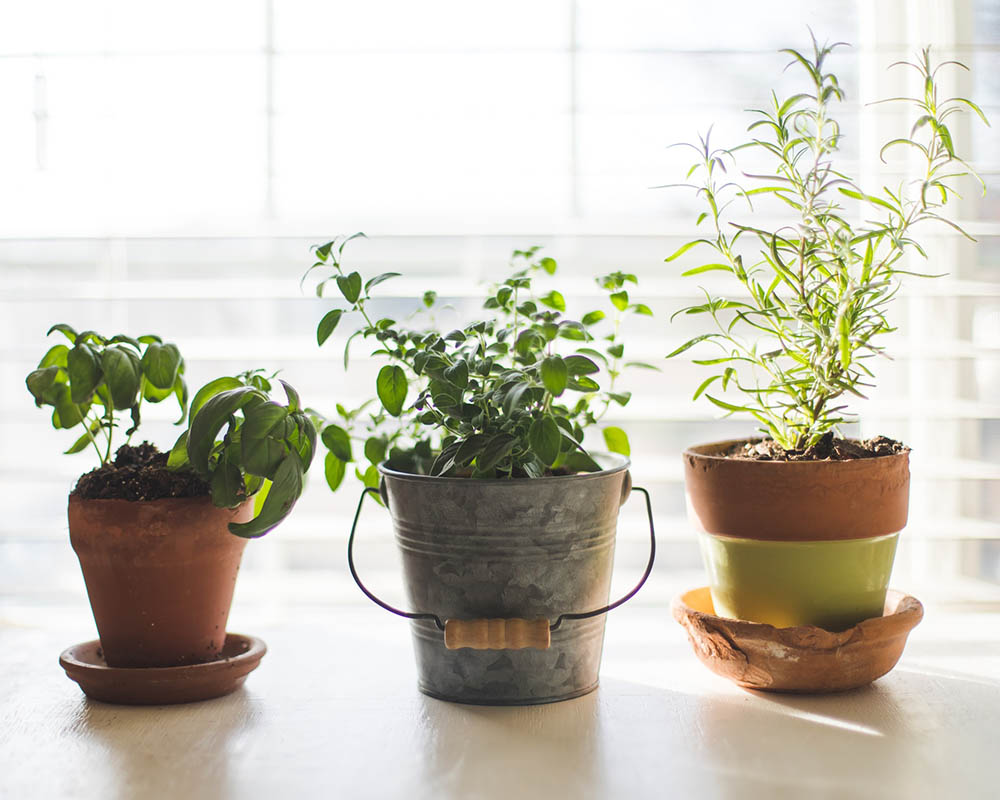
You should also have a good fertilizer on your herb-growing shopping list. It will ensure that your plants are getting the right mix of nutrients, encouraging good and even growth. The best fertilizers for growing herbs are those that are nitrogen-rich and natural: after all, you will be eating the plants that grow in the fertilizer. Fish and seaweed-based fertilizers are good options because they provide the nitrogen that the plants require and are safe for use in herb planters.
6. Pick a Sunny Spot
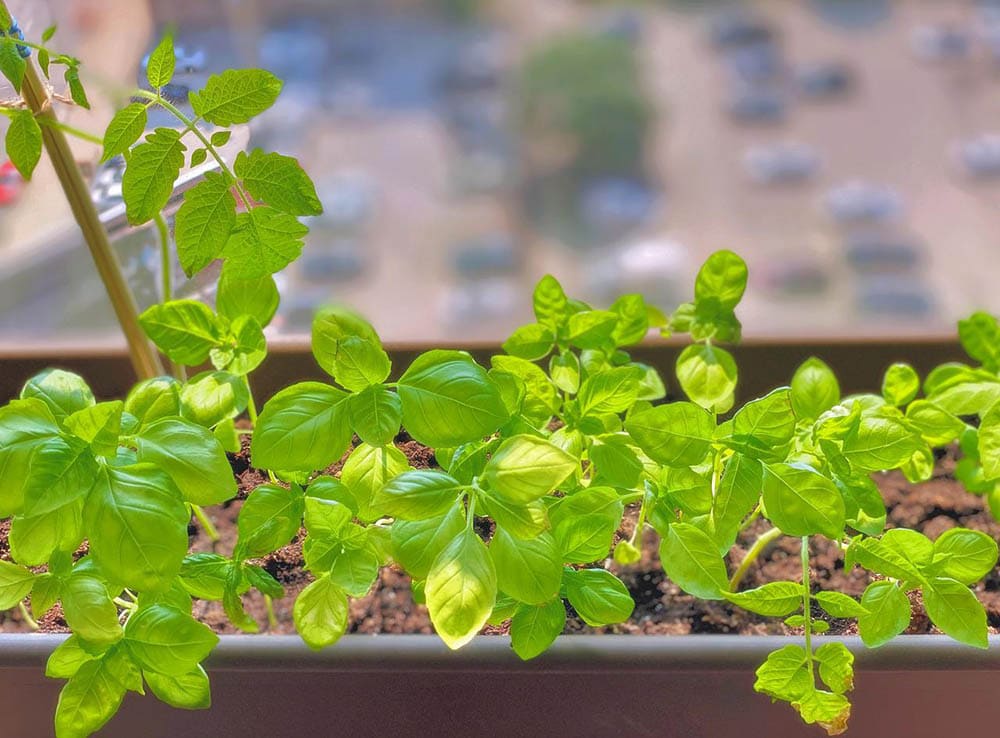
Herbs need a lot of direct sunlight to grow well: typically, between six and eight hours per day. The kitchen windowsill is a good place to start, but if you have a sunroom or conservatory, this is likely to enjoy even more sun and for longer periods of time, so is worth consideration. The plants also need a good temperature of approximately 70°. This should be easily achievable in most homes, but bear in mind that if you do keep your herb planters in the sunroom, you may need to move them out if the temperature gets above 70° and you want to slow their growth.
7. Don’t Overwater
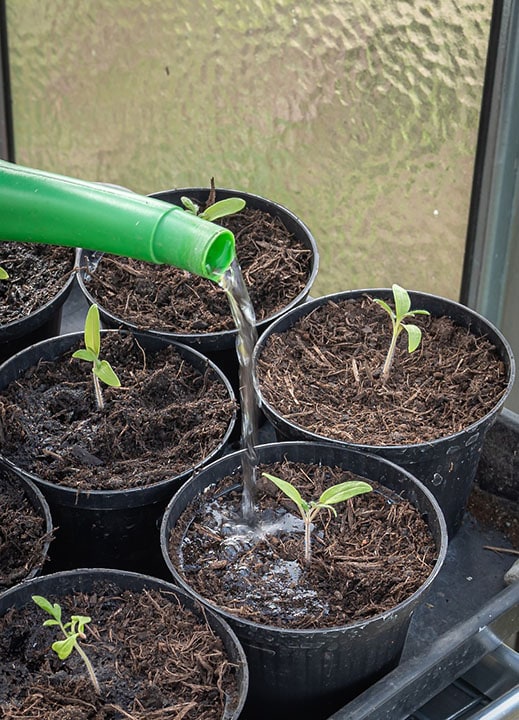
Herbs also need the right amount of water. The best routine requires watering two or three times a week, and not watering too much. You can check the soil by putting your finger about two inches under the surface. If the soil is dry at this depth, it is time to water again. Water slowly, rather than too quickly, or the water will run straight through the soil and out of the bottom of the planter.
8. Flush Water to Get Rid of Fertilizer Salt
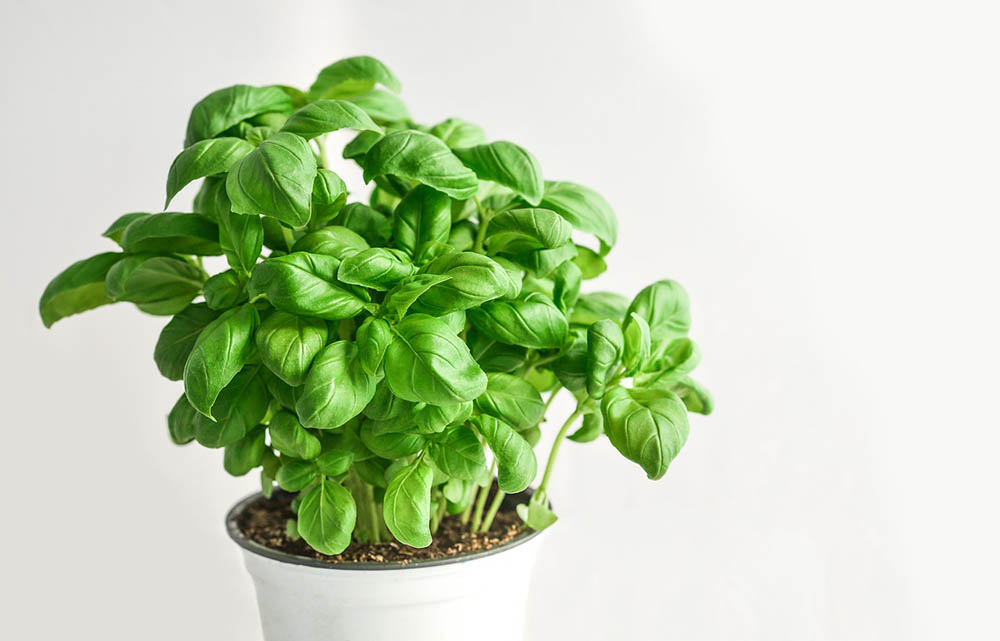
Fertilizer salt is a layer of salt that can form around the top of the soil and the planter itself. It is usually left behind after you have fed your herbs a fertilizer several times and then watered them. Although a small amount of this salt should be harmless, a build up can prove damaging. To get rid of the salt build up, hold the planter under a tap and water it until water runs out of the bottom of the planter. Allow the water to drain before placing it back on the saucer or tray.
9. Harvest Modestly

In most cases, the point of growing indoor herbs is to be able to use the produce and, as long as you harvest carefully, you should be able to keep cutting and using the herbs throughout their life. Avoid cutting away too much in one go, however. Harvest up to a quarter of the plant and allow it time to recover after harvesting before you take more. If you take too much, the plant could die, but regular harvesting will encourage greater growth.
10. Transplant When Ready

If the roots of your herbs are growing out of the drainage holes or the plant has visibly gotten too big for the existing plant, it could mean it’s time to replant to something bigger, as long as you have the windowsill space. If you leave a plant in a pot that is too small, it may stunt growth, but it shouldn’t kill the plant completely. If you do have space, plant in a bigger pot. In some instances, it might be possible to replant outdoors.
Conclusion
Indoor herbs can add greenery and beauty to a kitchen. They smell great, too, and it’s satisfying using your own herbs in the dishes you prepare. Ensure good light, water, and appropriate soil and fertilizer, choose herbs that are relatively easy to grow and maintain, and be sure that you don’t over harvest them, and you should enjoy great tasting and great smelling herbs at least for the next year.
See Also:
Featured Image Credit: donterase, Pixabay
Contents


